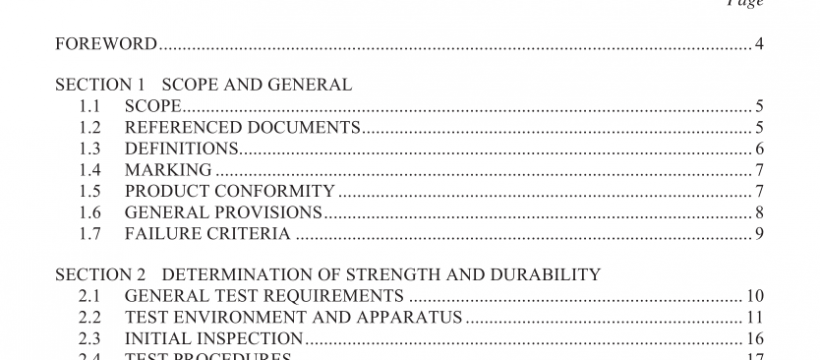AS NZS 3813:2016 pdf free download
AS NZS 3813:2016 pdf free download.Plastic monobloc chairs – Determination of strength and durability, stability, UV and weathering, and ignitability
2.4.2 Back static load test
The procedure shall be as follows:
(a) Place a piece of foam (Clause 2.2.4.6) on the seat and back or the seat and back loading pads.
(b) Position the centre of the back loading pad (Clause 2.2.4.4) either at the back loading position as specified by the chair loading position template (see Figure A2) or 100 mm below the top of the back, whichever is the lower.
(c) Prevent the chair from moving rearwards by placing stops behind the rear feet.
(d) Apply the test force of the appropriate magnitude specified in Appendix B perpendicular to the back when under load. (See Figure 2.7.)
(e) Conduct the test by the application of the force and balancing seat load for the number of load cycles specified in Appendix B. The seat load shall be applied (using either of the seat loading pads, Clauses 2.2.4.2 or 2.2.4.3) between 100 mm and 120 mm forward of the seat loading position in the median plane of the chair (see Appendix A).
The balancing seat load shall be fixed in its vertical axis to assist in resisting any rearward deformation of the chair and may be applied once and held for the duration of the test.
If the angle of the test load, when fully applied and perpendicular to the back, exceeds 35 degrees above the horizontal, the point of back load application shall be moved, as close as is practical, down 100 mm (in the approximate angle of the back), and the equivalent bending moment applied.
NOTE: If it is not possible to apply the back load at the back loading position due to the construction of the chair, for example, if the back is constructed of cross-members positioned above and/or below the back loading position, a suitable panel may be used to spread the load over the back cross-members so long as this surface does not overlap the side upright members.
AS NZS 3813:2016 pdf free download
